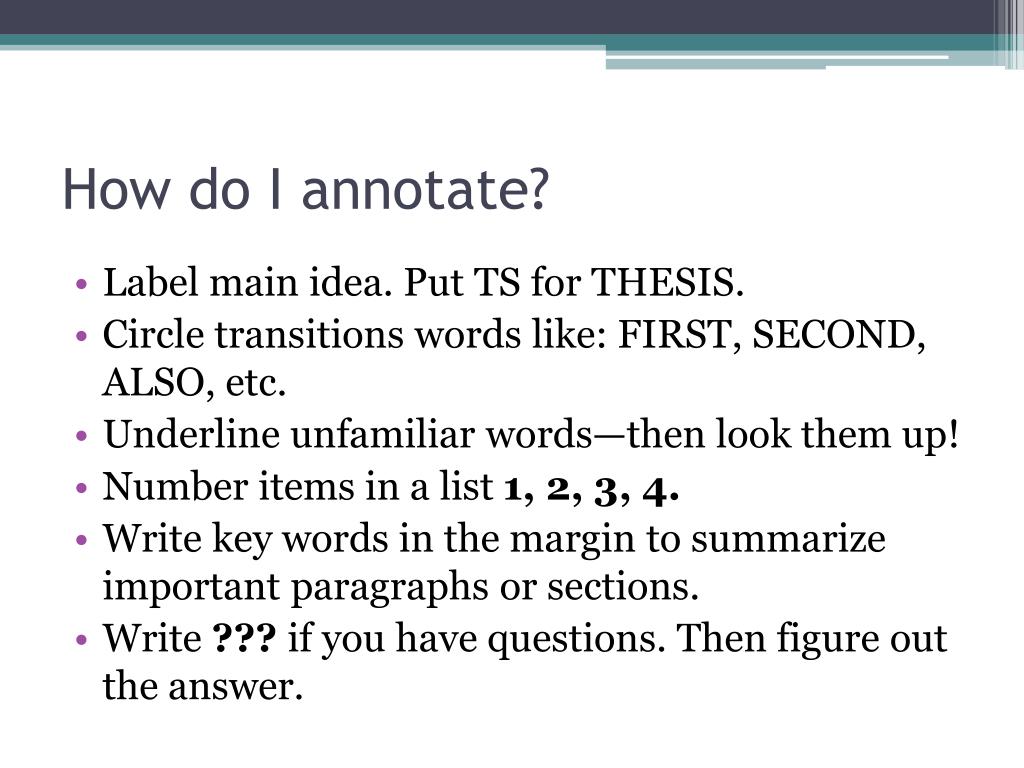

You also leave behind a set of notes that can help you find key information the next time you need to refer to that text. Annotation increases your odds of remembering what you’ve read, because you write those annotations in your own words, making the information your own.This is called “monitoring comprehension.” If not, you can immediately re-read or seek additional information to improve your understanding. By pausing to reflect as you read, annotating a text helps you figure out if you’re understanding what you’re reading. While it may take more time up front as you read, annotating while you read can help you avoid having to re-read passages in order to get the meaning. Annotation ultimately saves reading time.There are a number of reasons to annotate a text: Annotation is a form of active involvement with a text. Conversation works best when people are active participants. Your thought processes would probably close down and you would not engage in thinking about larger meanings related to the topic. You wouldn’t be able to get clarification or ask questions. You wouldn’t sit passively while the author talked at you. Think of annotating a text in terms of having a conversation with the author in real time. By reading carefully and pausing to reflect upon, mark up, and add notes to a text as you read, you can greatly improve your understanding of that text.

The main thing to remember is that annotation is at the core of active reading. You may annotate in different formats, either in the margins of the text or in a separate notepad or document. Annotating may occur on a first or second reading of the text, depending on the text’s difficulty or length. As you annotate, you may combine a number of reading strategies-predicting, questioning, dealing with patterns and main ideas, analyzing information-as you physically respond to a text by recording your thoughts. Annotating literally means taking notes within the text as you read.


 0 kommentar(er)
0 kommentar(er)
